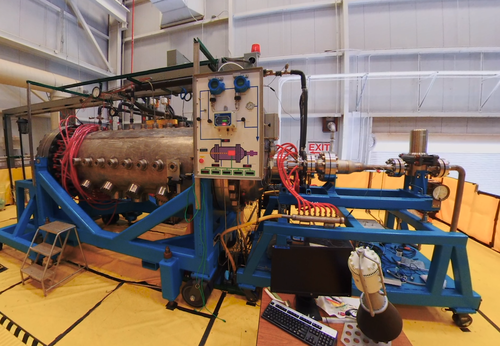NASA, DARPA Testing Nuclear Engine For Future Mars Missions
NASA and the Defense Advanced Research Projects Agency (DARPA) announced a plan on Tuesday to test out a nuclear-powered thermal rocket engine which will enable NASA-crewed missions to Mars, according to NASA.
The program, called Demonstration Rocket for Agile Cislunar Operations, or DRACO, could allow for faster transit time, an increased payload capacity, and higher power for instrumentation and communication.
In a nuclear thermal rocket engine, a fission reactor is used to generate extremely high temperatures. The engine transfers the heat produced by the reactor to a liquid propellant, which is expanded and exhausted through a nozzle to propel the spacecraft. Nuclear thermal rockets can be three or more times more efficient than conventional chemical propulsion. -NASA
Under the agreement, NASA’s Space Technology Mission Directorate (STMD) will lead technical development of the nuclear thermal engine to be integrated with DARPA’s experimental spacecraft. DARPA is acting as the contracting authority for the development of the entire stage and the engine, which includes the reactor. DARPA will lead the overall program including rocket systems integration and procurement, approvals, scheduling, and security, cover safety and liability, and ensure overall assembly and integration of the engine with the spacecraft. Over the course of the development, NASA and DARPA will collaborate on assembly of the engine before the in-space demonstration as early as 2027. -NASA
“DARPA and NASA have a long history of fruitful collaboration in advancing technologies for our respective goals, from the Saturn V rocket that took humans to the Moon for the first time to robotic servicing and refueling of satellites,” said DARPA director Dr. Stefanie Tompkins. “The space domain is critical to modern commerce, scientific discovery, and national security. The ability to accomplish leap-ahead advances in space technology through the DRACO nuclear thermal rocket program will be essential for more efficiently and quickly transporting material to the Moon and eventually, people to Mars.”
According to the press release, the last time the US conducted nuclear thermal rocket engine tests was more than 50 years ago under NASA’s Nuclear Engine for Rocket Vehicle Application and Rover projects.
“With this collaboration, we will leverage our expertise gained from many previous space nuclear power and propulsion projects,” said Jim Reuter, associate administrator for STMD. “Recent aerospace materials and engineering advancements are enabling a new era for space nuclear technology, and this flight demonstration will be a major achievement toward establishing a space transportation capability for an Earth-Moon economy.”
Tyler Durden
Thu, 01/26/2023 – 23:10
via ZeroHedge News https://ift.tt/pfYSb4x Tyler Durden


